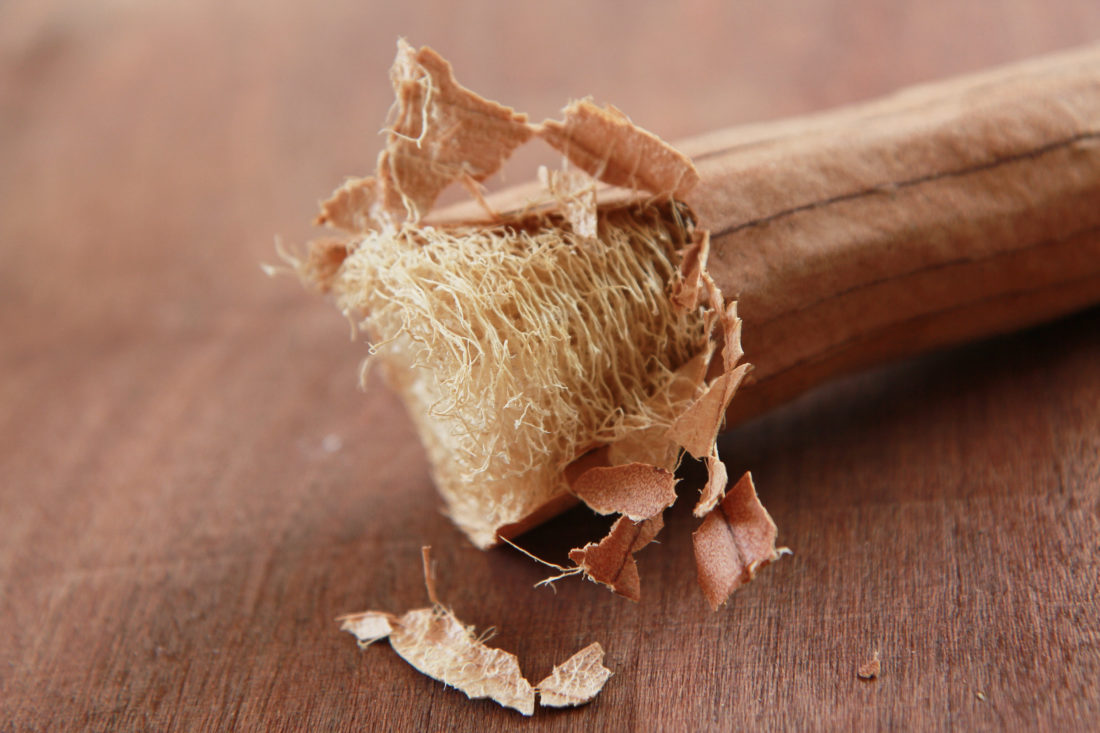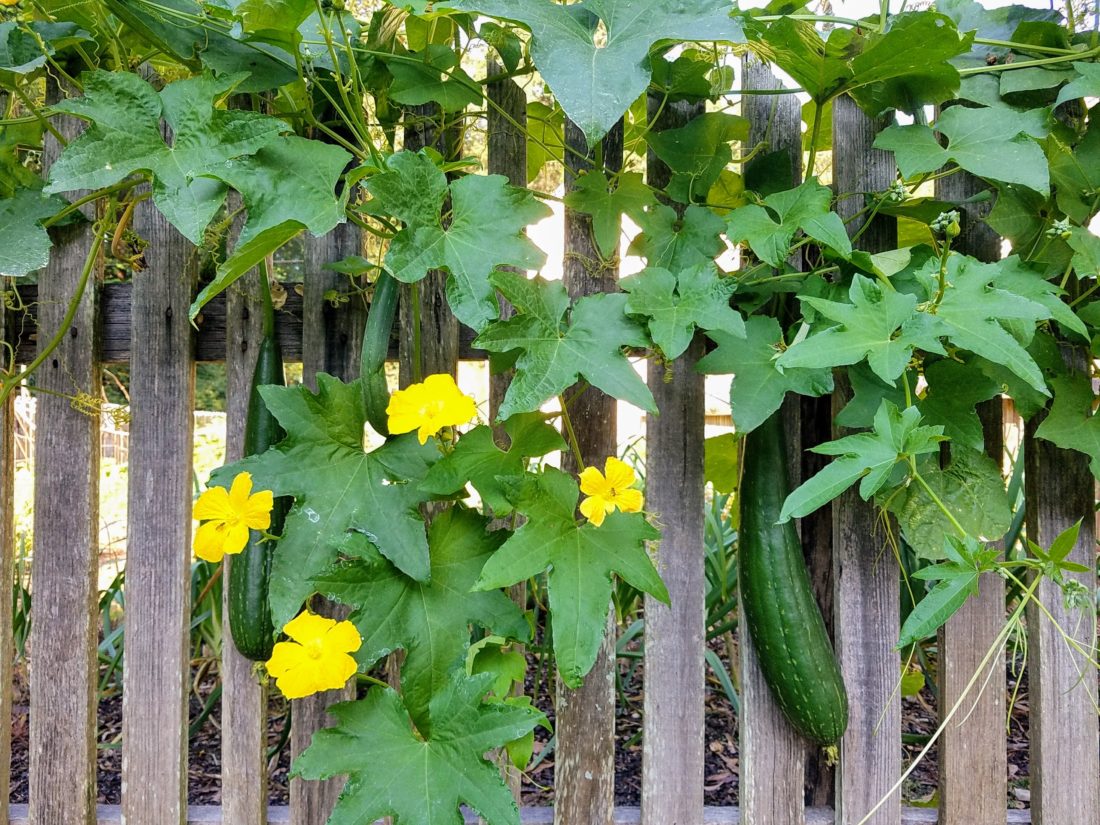On a pre-pandemic trip to the Atlanta History Center, I learned several things: that their library houses the largest collection of Southern cookbooks; that real-life, period actors greet you like friendly ghosts inside the historic Swan House on the property (always nice to have a heads up if you plan on going); and where loofahs come from.

Yes, loofahs, those lovely sponges for scrubbing skin to perfection. It turns out real loofahs do not come from the ocean, like sponges, and not always manmade from a factory, as I mistakenly thought, but from a gourd. Technically, a plant commonly known as a dishrag gourd (genus Luffa!), which produces prolific fruit that looks very similar to Southern squash or zucchini or cucumber; the loofahs hide inside the fruit. I spotted one while walking through the kitchen garden of the Smith Farm on the AHC’s property, a home and garden literally moved from North Carolina and restored as a house museum.

According to Sarah Roberts, the vice president of Goizueta Gardens and Living Collections at the AHC, the plant has been in cultivation for 10,000 years and its contents used for everything from kitchen sponges to insulation. While the exact arrival of the gourd to the United States remains a bit hazy, says Roberts, it’s likely that Japan was an initial source. When World War II broke out and trade was suspended, the United States began growing them commercially for use in marine filters during the war. Right about now is the time the gourds mature in the South. “The seeds rattle inside when the gourds are ready to be brought in to cure,” Roberts says. From there, all you do is peel the fruit and soak the loofahs in water and you’re ready to scrub. That’s it.
Interested in having baskets and baskets of homegrown loofahs in all your bathrooms? The plants grow in many warm zones in the South and do well on trellises and arbors because they like to climb, but be careful to cut them back and keep them in a contained garden because they can be invasive if allowed to enter the local ecosystem. Happy scrubbing!








